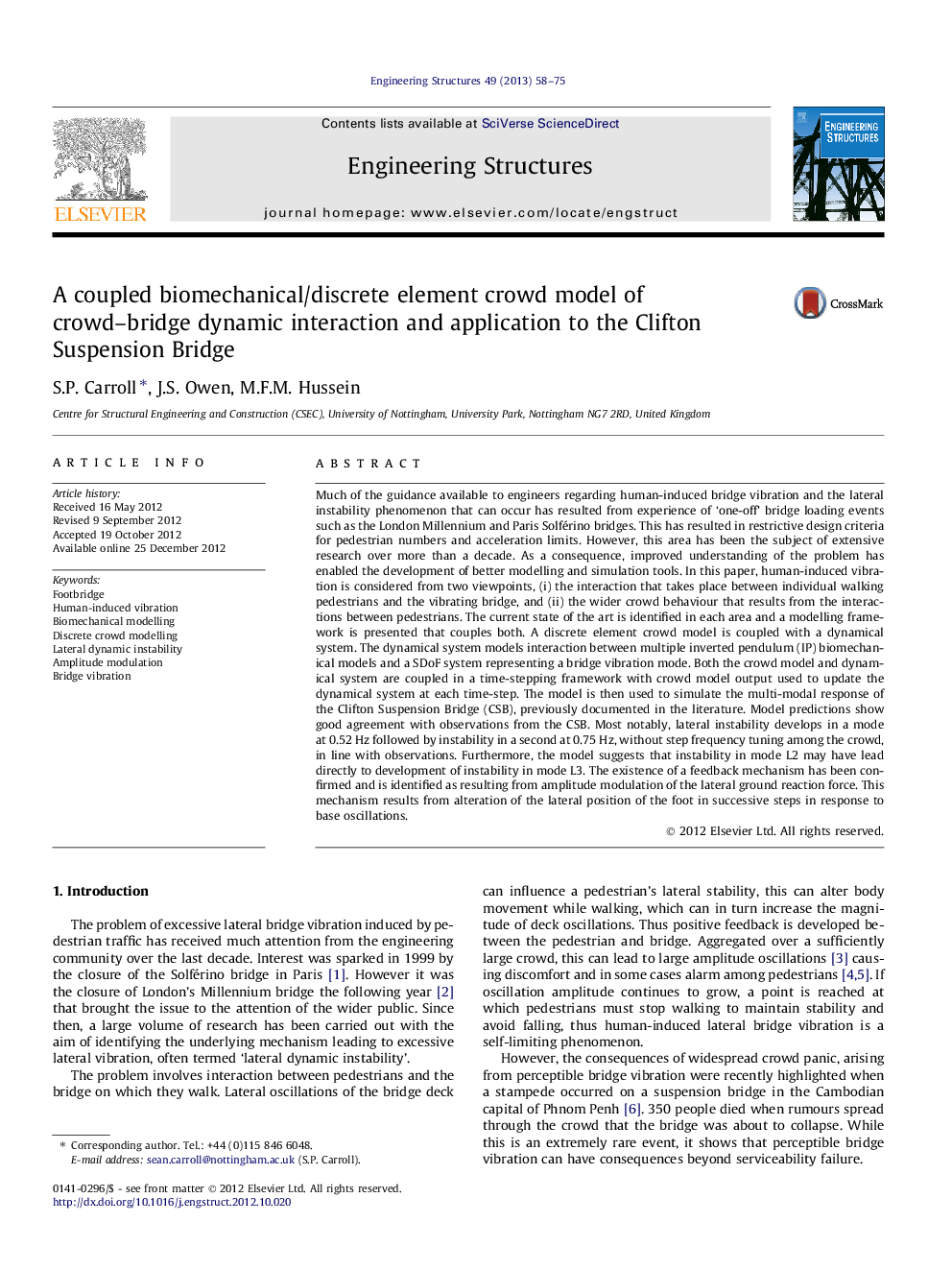| کد مقاله | کد نشریه | سال انتشار | مقاله انگلیسی | نسخه تمام متن |
|---|---|---|---|---|
| 267159 | 504397 | 2013 | 18 صفحه PDF | دانلود رایگان |

Much of the guidance available to engineers regarding human-induced bridge vibration and the lateral instability phenomenon that can occur has resulted from experience of ‘one-off’ bridge loading events such as the London Millennium and Paris Solférino bridges. This has resulted in restrictive design criteria for pedestrian numbers and acceleration limits. However, this area has been the subject of extensive research over more than a decade. As a consequence, improved understanding of the problem has enabled the development of better modelling and simulation tools. In this paper, human-induced vibration is considered from two viewpoints, (i) the interaction that takes place between individual walking pedestrians and the vibrating bridge, and (ii) the wider crowd behaviour that results from the interactions between pedestrians. The current state of the art is identified in each area and a modelling framework is presented that couples both. A discrete element crowd model is coupled with a dynamical system. The dynamical system models interaction between multiple inverted pendulum (IP) biomechanical models and a SDoF system representing a bridge vibration mode. Both the crowd model and dynamical system are coupled in a time-stepping framework with crowd model output used to update the dynamical system at each time-step. The model is then used to simulate the multi-modal response of the Clifton Suspension Bridge (CSB), previously documented in the literature. Model predictions show good agreement with observations from the CSB. Most notably, lateral instability develops in a mode at 0.52 Hz followed by instability in a second at 0.75 Hz, without step frequency tuning among the crowd, in line with observations. Furthermore, the model suggests that instability in mode L2 may have lead directly to development of instability in mode L3. The existence of a feedback mechanism has been confirmed and is identified as resulting from amplitude modulation of the lateral ground reaction force. This mechanism results from alteration of the lateral position of the foot in successive steps in response to base oscillations.
► A coupled biomechanical/discrete element crowd model of crowd–bridge interaction is proposed.
► A semi-active inverted pendulum model is used to characterise pedestrian lateral balance behaviour.
► A discrete element crowd model simulates the spatial and temporal evolution of crowd behaviour.
► Amplitude modulation of the lateral footfall force is found to generate lateral instability.
► The model agrees well with behaviour observed on the Clifton Suspension Bridge, Bristol.
Journal: Engineering Structures - Volume 49, April 2013, Pages 58–75